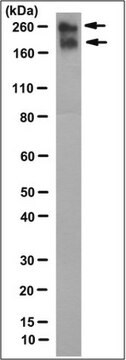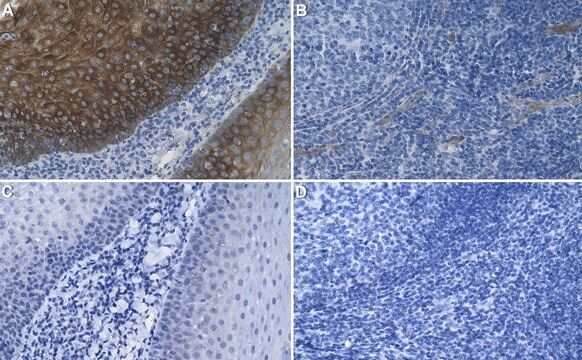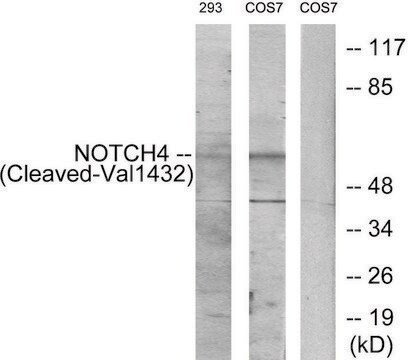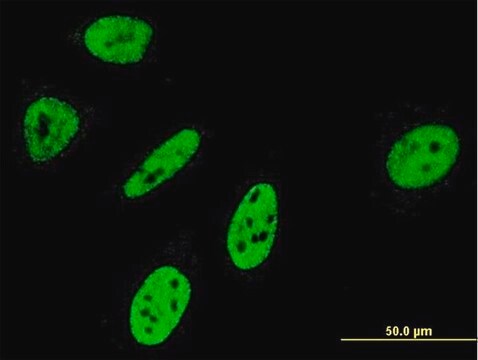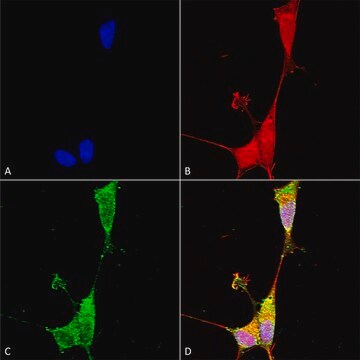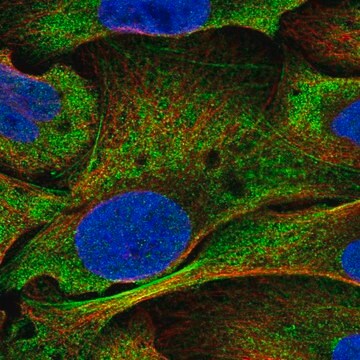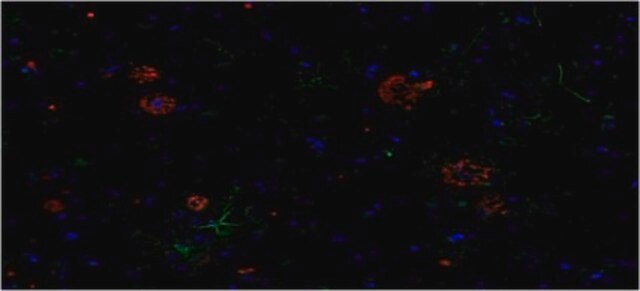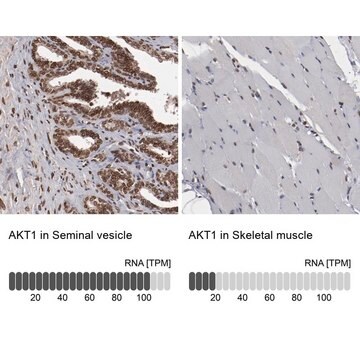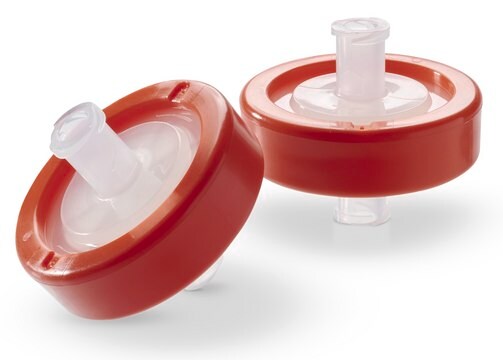MABF937
Anti-Notch 3 Antibody, ECD, clone 2G8
clone 2G8, from rat
Synonym(e):
Neurogenic locus notch homolog protein 3, Notch 3, Notch homolog 3, Notch 3 ECD
About This Item
Empfohlene Produkte
Biologische Quelle
rat
Qualitätsniveau
Antikörperform
purified immunoglobulin
Antikörper-Produkttyp
primary antibodies
Klon
2G8, monoclonal
Speziesreaktivität
human
Methode(n)
immunofluorescence: suitable
immunohistochemistry: suitable (paraffin)
western blot: suitable
Isotyp
IgG2aκ
NCBI-Hinterlegungsnummer
UniProt-Hinterlegungsnummer
Versandbedingung
wet ice
Posttranslationale Modifikation Target
unmodified
Allgemeine Beschreibung
Spezifität
Immunogen
Anwendung
Entzündung & Immunologie
Immunohistochemistry Analysis: A representative lot detected the aggregated Notch 3 extracellular domain (ECD) deposits in brain blood vessels of CADASIL patients by immunohistochemistry staining of paraformaldehyde-fixed, paraffin-embedded brain tissue sections (Kast, J., et al. (2014). Acta Neuropathol. Commun. 2:96).
Immunofluorescence Analysis: A representative lot detected the aggregated Notch 3 extracellular domain (ECD) deposits in brain blood vessels of CADASIL patients by fluorescent immunohistochemistry staining of paraformaldehyde-fixed frozen brain tissue sections. The Notch3-EDC immunoreactivity was seen co-localized with that of LTBP-1, but not fibrillin-1 (Kast, J., et al. (2014). Acta Neuropathol. Commun. 2:96).
Western Blotting Analysis: A representative lot detected an elevated accumulation of aggregated Notch 3 extracellular domain (ECD) in brain blood vessel extracts from CADASIL patients when comparing to vessel extracts from non-diseased brains (Kast, J., et al. (2014). Acta Neuropathol. Commun. 2:96).
Nervous System
Qualität
Isotyping Analysis: The identity of this monoclonal antibody is confirmed by isotyping test to be IgG2aκ.
Zielbeschreibung
Physikalische Form
Lagerung und Haltbarkeit
Sonstige Hinweise
Haftungsausschluss
Sie haben nicht das passende Produkt gefunden?
Probieren Sie unser Produkt-Auswahlhilfe. aus.
Lagerklassenschlüssel
12 - Non Combustible Liquids
WGK
WGK 1
Flammpunkt (°F)
Not applicable
Flammpunkt (°C)
Not applicable
Analysenzertifikate (COA)
Suchen Sie nach Analysenzertifikate (COA), indem Sie die Lot-/Chargennummer des Produkts eingeben. Lot- und Chargennummern sind auf dem Produktetikett hinter den Wörtern ‘Lot’ oder ‘Batch’ (Lot oder Charge) zu finden.
Besitzen Sie dieses Produkt bereits?
In der Dokumentenbibliothek finden Sie die Dokumentation zu den Produkten, die Sie kürzlich erworben haben.
Unser Team von Wissenschaftlern verfügt über Erfahrung in allen Forschungsbereichen einschließlich Life Science, Materialwissenschaften, chemischer Synthese, Chromatographie, Analytik und vielen mehr..
Setzen Sie sich mit dem technischen Dienst in Verbindung.